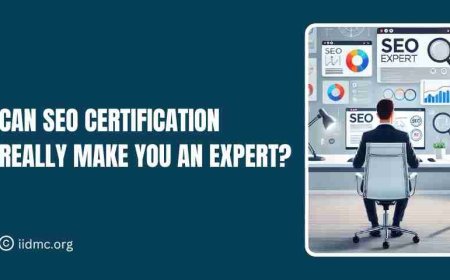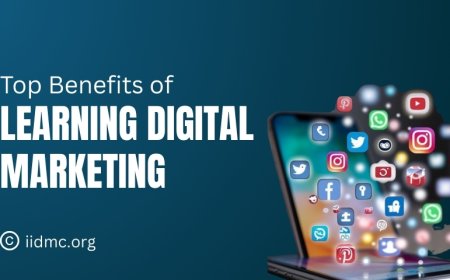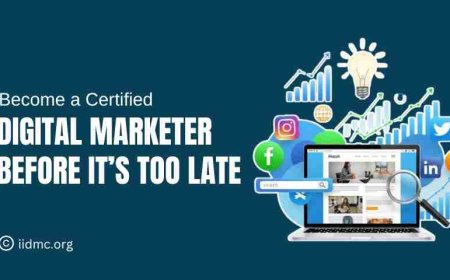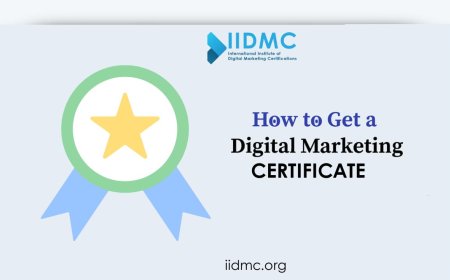Top Tips to Become a Digital Ad Expert
Discover essential tips to become a digital ad expert! Learn audience targeting, ad optimization, data analysis, creative copywriting, and stay ahead with the latest trends and tools.

In today's digital age, mastering the art of digital advertising isn't just an advantage—it's a necessity. Whether you're a budding marketer, a business owner looking to boost online presence, or a career-switcher eager to dive into a dynamic field, becoming a digital ad expert can open a world of opportunities. But where do you start? And how can you rise above the noise to truly make an impact? In this post, we’ll explore top tips from industry leaders that will help you not only understand the digital advertising enivironment but dominate it. Get ready to transform clicks into customers as we unlock the secrets to becoming a digital ad expert.
Digital Advertising Overview
Digital advertising delivers promotional content online via platforms like search engines, social media, websites, and apps. It's essential for reaching targeted audiences and tracking performance in real time, offering businesses cost-effective ways to drive traffic, leads, and sales.
Key Digital Advertising Channels
1. Search Engine Ads (Google, Bing): These pay-per-click (PPC) ads appear in search results when users search for specific keywords, allowing businesses to target customers actively looking for their products or services.
2. Social Media Ads (Facebook, Instagram, LinkedIn, TikTok): Social media ads use targeting options like demographics and interests to reach audiences through engaging formats like images, videos, and carousels.
3. Display Ads & Programmatic Advertising Display ads (banner or video): appear on websites, while programmatic advertising uses automated systems to target the right audience in real time for better ad efficiency.
4. Email Marketing & Native Ads: Email marketing sends promotional content to subscribers’ inboxes, while native ads blend seamlessly into a website's design, appearing more like regular content than traditional ads.
These channels help businesses grow and engage with potential customers online.
Audience Targeting and Segmentation
Audience targeting is key in digital marketing, allowing businesses to deliver ads to the right people. Segmentation involves dividing your audience based on characteristics such as demographics, interests, and behaviors to create more relevant and effective campaigns.
Key Components:
-
Demographics, Interests, and Behaviors:
-
Demographics: Age, gender, income, education level, job title, etc.
-
Interests: Hobbies, activities, or products people are passionate about.
-
Behaviors: Purchasing habits, browsing patterns, or past interactions with your brand.
-
By understanding these factors, you can tailor ads to resonate with specific groups.
-
Creating Customer Personas:
-
Definition: Customer personas are detailed profiles that represent your ideal customers, based on research and data.
-
Importance: Personas help marketers understand customer motivations, preferences, and pain points, enabling more personalized content and product offerings.
-
How to Develop: Use customer data, surveys, and market research to create personas with demographic details, goals, and challenges.
-
Advanced Targeting Techniques:
-
Retargeting: Showing ads to people who’ve already interacted with your brand (visited your website, etc.).
-
Lookalike Audiences: Finding new customers who share similar traits with your existing audience.
-
Geo-Targeting: Delivering ads based on a user’s geographic location, such as city, state, or even neighborhood.
Effective audience targeting and segmentation ensure your ads reach the right people, leading to better engagement and higher conversion rates.
Mastering Data Analytics and Ad Performance Tracking
Ad performance tracking is crucial for optimizing digital campaigns. By using the right tools and tracking key metrics, marketers can measure success, make data-driven decisions, and improve ROI.
Tools for Measuring Performance:
-
Google Analytics: Tracks website traffic, user behavior, and conversion data. Essential for understanding how ads drive site visits and actions.
-
Facebook Ads Manager: Provides insights into ad performance on Facebook and Instagram, including audience engagement, reach, and conversions.
-
Other Tools: Platforms like Google Ads, LinkedIn Campaign Manager, and third-party analytics tools can help measure ad effectiveness across various channels.
Key Metrics to Track:
-
Click-Through Rate (CTR): Measures the percentage of people who clicked on your ad. Higher CTR indicates strong relevance and engagement.
-
Conversion Rate: The percentage of users who completed a desired action (e.g., purchase, sign-up). A critical indicator of ad effectiveness.
-
Cost Per Click (CPC): The average cost for each click on your ad. Lower CPC means more cost-efficient campaigns.
-
Return on Ad Spend (ROAS): Measures the revenue generated for every dollar spent on ads. A key metric to evaluate campaign profitability.
Understanding Conversion Funnels:
-
Awareness Stage: Ads generate interest in the product or service (top of the funnel).
-
Consideration Stage: Retargeting ads and educational content guide users toward a decision (middle of the funnel).
-
Conversion Stage: Ads drive users to complete purchases or take desired actions (bottom of the funnel).
By mastering these tools and metrics, marketers can better understand how ads impact the buyer’s journey and optimize campaigns accordingly.
Optimizing for Different Platforms and Ad Formats
Each platform and ad format requires a tailored approach to ensure maximum effectiveness. Understanding platform-specific strategies, mastering various ad types, and optimizing for mobile are key to success.
Platform-Specific Strategies:
-
Facebook Ads:
-
Key Differences: Best for highly targeted, interest-based ads. Facebook offers a variety of formats (carousel, video, static) and strong audience segmentation tools.
-
Best Practices: Use visually engaging content and clear call-to-actions (CTAs). Leverage retargeting and custom audiences for higher conversions.
-
Google Ads:
-
Key Differences: Focuses on intent-based advertising through search and display networks. Ideal for capturing high-intent users searching for specific products or services.
-
Best Practices: Optimize for high-ROI keywords, use ad extensions (site links, callouts), and ensure landing pages are aligned with ad copy.
-
TikTok Ads:
-
Key Differences: Best for short, engaging video content targeting a younger demographic. The platform thrives on creativity and viral potential.
-
Best Practices: Use trends and authentic content. Create ads that feel native to the platform with user-generated style, and keep them short (15-60 seconds).
Ad Types to Master:
-
Display Ads: Visual banner ads placed on websites or apps. Great for brand awareness and retargeting.
-
Video Ads: Popular across platforms like YouTube, Facebook, and TikTok. Engage users with storytelling and dynamic content.
-
Carousel Ads: Multiple images or videos in one ad (popular on Facebook and Instagram). Ideal for showcasing multiple products or features.
Mobile Optimization:
-
Best Practices for Mobile Ads:

-
Short and Simple: Keep messaging concise and visually clear for small screens.
-
Fast Loading: Ensure ad assets load quickly to prevent drop-offs.
-
Touch-Friendly CTAs: Use large, easy-to-tap buttons for a seamless mobile experience.
-
Vertical Formats: Optimize videos and images for vertical viewing to fit how users naturally hold their devices.
A/B Testing and Continuous Experimentation
-
Importance of A/B Testing:
-
A/B testing is crucial for optimizing ad performance by comparing different versions of an ad. It helps identify which elements resonate best with your audience, leading to improved conversion rates and ROI.
-
What to Test:
-
Headlines: Test different titles to see which grabs attention.
-
Imagery: Compare different visuals or styles to determine which drives engagement.
-
Ad Copy: Experiment with variations in language, tone, or length.
-
CTAs (Call to Action): Test different action phrases (e.g., "Buy Now" vs. "Learn More").
-
Landing Pages: Compare landing page layouts, messaging, and offers to see what converts better.
-
Interpreting Test Results:
-
Analyze the performance data (clicks, conversions, CTR) from each version. Use these insights to refine future campaigns and allocate budget to the highest-performing elements.
Stay Updated on Digital Ad Trends and Tools
-
Evolving Platforms:
-
Algorithm updates on platforms like Google and Facebook can affect ad visibility and effectiveness. Staying informed helps adjust strategies quickly to maintain performance.
-
Ad Tech Tools to Use:
-
Automation Tools: Streamline ad bidding and budget adjustments with tools like Google Ads Smart Bidding.
-
AI-Powered Tools: Platforms like Phrasee (for copy) and Canva (for design) enhance ad creativity.
-
Analytics Platforms: Use tools like Google Analytics, Hotjar, or SEMrush to track user behavior and optimize campaigns.
-
Industry News and Resources:
-
Follow blogs (e.g., HubSpot, Search Engine Land), join webinars, and take courses (e.g., Google Ads certification) to stay ahead of trends and technology changes.
Develop Creative Copywriting and Visual Skills
-
Crafting Compelling Ad Copy:
-
Keep your writing persuasive, concise, and action-oriented. Focus on addressing customer pain points and presenting a clear benefit.
-
Visual Appeal in Ads:
-
Design elements like colors, typography, and layout should capture attention and align with your message. Strong visuals can increase engagement and recall.
-
Understanding Brand Voice and Messaging:
-
Maintain consistency in tone and message across all ads to strengthen brand identity and foster trust with your audience.
Invest in Certifications and Courses
-
Google Ads Certification:
-
Importance: Validates your Google Ads expertise.
-
How to Obtain: Free courses and exams through Google Skillshop.
-
-
Facebook Blueprint Certification:
-
Boost Expertise: Demonstrates proficiency in Facebook and Instagram ads.
-
How to Obtain: Enroll in Facebook's Blueprint courses and pass the certification exam.
-
Build a Portfolio and Gain Experience
-
Start Small:
-
Run campaigns for small clients or personal projects to build experience.
-
Create Case Studies:
-
Showcase strategies, results, and insights to demonstrate your capabilities.
-
Networking and Freelancing:
-
Use freelancing platforms or job boards to find clients and grow your expertise.
Collaboration with Designers, Developers, and Marketers
-
Work as a Team:
-
Collaborate with designers, developers, and other marketers to ensure cohesive ad strategies.
- Understand the Holistic Marketing Strategy:
-
Align digital ads with SEO, content marketing, and overall brand strategy for integrated marketing success.
To become a digital ad expert, focus on mastering key channels like search engine ads, social media ads, and programmatic advertising. Understanding targeting, tracking performance, and optimizing campaigns are essential skills. Always stay updated on industry trends and tools to improve your advertising strategies.
Ongoing learning and experimentation are crucial in digital marketing, and platforms like IIDMC (International Institute of Digital Marketing Certified) can provide valuable certifications and resources. By continuously refining your skills and testing new approaches, you'll stay ahead in the ever-evolving digital advertising world .





























